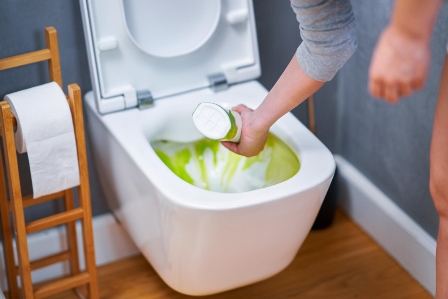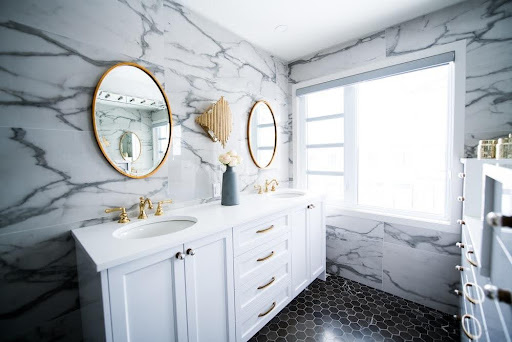As the leaves change color and begin to fall and the air turns crisp, it’s evident that winter is just around the corner. This change of seasons is a crucial time for homeowners to focus on repair and maintenance tasks that ensure their homes are ready to withstand the colder months. If cost is your concern, know that they vary based on several factors. The scope and cost of these necessary repairs can vary greatly, similar to how home remodeling projects differ in complexity and price. For instance, the cost of a bathroom remodel in San Antonio, Texas, can range from $6,200 to $36,200. This variation is largely dependent on factors such as the size of the bathroom and the extent of the renovation required. Just as with remodeling, the cost and extent of pre-winter home maintenance can vary, but ensuring these tasks are completed is essential for a warm, safe, and efficient home during the winter months.
1. Consult With the Experts
One key area to address before winter is the condition of your shower. In San Antonio, where temperatures can fluctuate, ensuring that your shower is in optimal condition is vital. Consulting with experts in shower replacement can provide you with the necessary insights into whether your shower needs maintenance or a complete replacement.
Experts for shower replacement in San Antonio can assess your current setup and advise on the best course of action. They can identify potential problems such as leaky fixtures, inefficient showerheads, or damaged tiles that could lead to more significant issues during the colder months. They can also recommend water-efficient models and modern fixtures that could enhance your bathroom’s functionality and aesthetic appeal while potentially reducing water bills.
Beyond the immediate benefits, expert consultation can also reveal ways to improve the overall insulation and energy efficiency of your bathroom. It could involve updating the shower enclosure or installing new, more energy-efficient pipes and fixtures, which can be crucial for reducing heat loss and conserving energy during the winter.
2. Inspect and Clean Gutters
Gutter maintenance is another crucial pre-winter task. Gutters play a vital role in directing rainwater away from your home’s foundation, walls, and roof. Before winter sets in, it’s important to ensure that your gutters are free from leaves, debris, and blockages.
Inspecting and cleaning your gutters can prevent water from pooling and causing damage to your roof or siding. This task can be done by climbing a ladder and removing debris by hand or with tools like a gutter scoop. It’s also a good opportunity to inspect for any signs of damage or wear, such as cracks or sagging, which could indicate the need for repairs or replacement.
Additionally, consider installing gutter guards to minimize the accumulation of debris, which can reduce the frequency of gutter cleaning and help maintain proper water flow during heavy rains and snowfalls.
3. Seal Windows and Doors
Sealing windows and doors is a straightforward yet effective way to prepare your home for winter. Drafty windows and doors can lead to significant heat loss, resulting in higher heating bills and a less comfortable living environment.
Homeowners can easily check for drafts by feeling around window frames and door edges for cold air. To seal these drafts, use weather stripping or caulk to fill gaps and cracks. It not only helps to retain heat but also prevents moisture from entering, which can cause damage and mold growth.
For windows, consider using insulating window films or heavy curtains to further reduce heat loss. These simple measures can make a noticeable difference in maintaining a warm and energy-efficient home throughout the winter months.
4. Service the Heating System
With winter approaching, ensuring your heating system is in top working order is crucial. A well-maintained heating system not only keeps your home warm and cozy but also operates more efficiently, saving you money on energy bills.
The first step is to replace or clean the filters in your furnace or heating system. Dirty filters restrict airflow and reduce efficiency. They can also cause your system to overwork, leading to more significant problems down the line. It’s a simple task that most homeowners can do themselves.
However, for a more comprehensive checkup, it’s advisable to hire a professional. A skilled technician can inspect your heating system for any potential issues, such as leaks in the ductwork or problems with the furnace’s ignition system. They can also clean and adjust the burner assembly, blower motor, and other components to ensure everything is running smoothly. This annual service can prevent unexpected breakdowns during the coldest months and extend the life of your heating system.
5. Check Roof and Attic Insulation
Your roof and attic play a pivotal role in keeping your home insulated and protected from winter weather. Before the cold sets in, a thorough inspection of your roof and attic is necessary to identify any potential issues.
Start by inspecting your roof for any signs of damage, like missing or broken shingles, cracks, or leaks. These issues can lead to water damage and heat loss if not addressed. Cleaning your roof and removing debris can also prevent water accumulation and ice dams during snowy conditions.
Next, evaluate your attic’s insulation. Proper insulation in the attic is key to preventing heat loss through your roof. Check if the insulation is evenly spread and there are no gaps. If it’s inadequate, consider adding more insulation to improve energy efficiency and reduce heating costs.
6. Prepare Plumbing for Cold Weather
Preparing your plumbing for winter is crucial to prevent pipes from freezing and bursting, which can cause extensive damage to your home. Start by insulating any exposed pipes in areas like basements, attics, and garages. You can use foam pipe insulation for this purpose; it’s inexpensive and easy to install.
Next, drain water from outdoor faucets and sprinkler systems, and disconnect and store any outdoor hoses. It helps prevent residual water in pipes from freezing and causing a rupture. For indoor plumbing, keep a trickle of water running on particularly cold nights to prevent pipes from freezing.
If you’re unsure about how to winterize your plumbing or if your home has a history of frozen pipes, it’s wise to call a professional plumber. They can conduct a thorough inspection and take necessary precautions to safeguard your plumbing system against the harsh winter temperatures.
Conclusion
Proactively addressing these six maintenance tasks can significantly reduce the risk of winter-related damage to your home. From consulting experts for shower replacements to ensuring your heating system, roof, and plumbing are winter-ready, these steps will not only protect your home but also contribute to a more comfortable and energy-efficient environment during the cold months.










Find Us on Socials